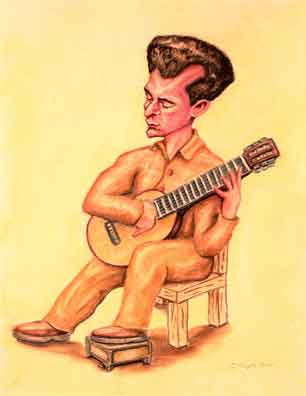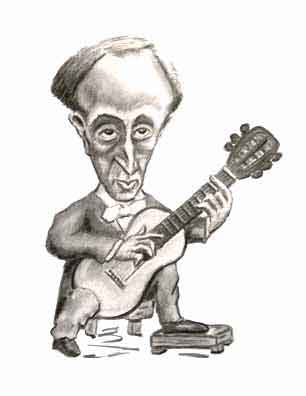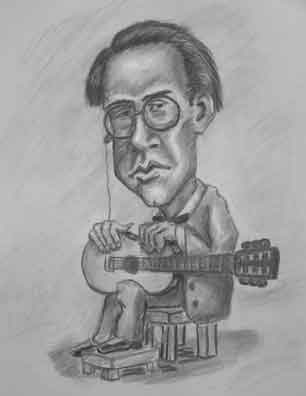Jose Rey de la Torre

Jose Rey de la Torre
In 1932 Jose Rey de la Torre, then only 14, arrived in Barcelona from his native Cuba to take guitar lessons from Miguel Llobet. From Rey's account of their meeting, the older man seemed a bit disinclined to take on a new student, but finally agreed, provided Rey stuck to a strict pedagogical regimen. First, Rey had to start his training from scratch. He was allowed only to play the music and lessons that Miguel stipulated. Furthermore, Rey could not move on to anything more advanced until he had mastered the earlier assignments to Miguel's satisfaction. Rey, who at this point could already play quite well, readily agreed and also knew better than to try to cheat.
Although Miguel was an exacting and demanding teacher, he recognized that with Rey he had an exceptional student on his hands and was complimentary and encouraging whenever Rey played for others. Miguel once took Rey to Emilio Pujol, the guitarist and composer who, like Miguel, had studied with Francisco Tarrega. Emilio listened to the selections, and then took out a strong Cuban cigarette (Rey, already a heavy smoker, envied the luxury, but he knew this wasn't the place to ask for one himself). Emilio looked at Miguel. "Well," he said, "it looks like this boy can play anything." "Yes," Miguel agreed, "anything." Miguel also arranged for Rey's first public recitals which received rave reviews from the Barcelona critics, who had never been known for their forgiving nature. Rey was just sixteen.

Miguel Llobet
An Exacting Teacher
Rey returned to Cuba in 1934 and began a concert and recording career that lasted until the mid-1970's. His first performance in the United States was at Town Hall in 1940, and he was the soloist at the American premiere of the famous Concierto de Aranujez in Cleveland in 1959. That this major work wasn't played in the US until nearly 20 years after the European premiere is an indication how even at that relatively late date the classical guitar was still a novelty instrument. And no, the artist at the Concierto's world performance in Barcelona was not Andrés Segovia. The performer was Segovia's contemporary, Regino Sainz de la Maza, to whom the work was dedicated.
One particularly interesting album, which at this writing is available as a CD or as (somewhat less expensive) downloadable MP3 files, is a dual recording which features Rey and Segovia, sometimes playing the same tunes. It's an interesting comparison since the different performances represent, if not entirely divergent traditions, two independent developments of playing technique. This album, by the way, is one from Segovia and his Contemporaries, a recording series whose titles simultaneously affirm Segovia's position in the public mind as the originator of the classical guitar and ironically refutes the concept. Let it be said that CooperToons is not a Segovia basher - he's actually quite a fan - but it is definitely an oversimplification, if not out-and-out incorrect, to say that Andrés invented the classical guitar. Thanks to people like Miguel, Rey, Sainz, and many others, it had been coming along quite nicely, thank you.

Andres Segovia
Not quite the inventor.
Rey's talent was by no means limited to the classical guitar. He was quite skilled at baseball and while in Barcelona - unbeknownst to Miguel - had played for a local team. Rey was also an expert animal trainer and in later years had a pet parakeet named Chickatee who would perform tricks on command.
By 1976 progressive rheumatoid arthritis forced had Rey to retire from performing. But he continued teaching for the next twenty years and died in California in 1994.
References
"Miguel Llobet, El Mestre," Jose Rey de la Torre, Guitar Review, Vol, 60, p. 31, (1985). Although this article is about Llobet, Rey tells of his first meeting with Miguel and about his time as a student, including his playing for Pujol.
Personal Communications, Robert Phillips, 8/14/2010 - 10/10/2011 Many thanks to Robert for first hand information about Rey.